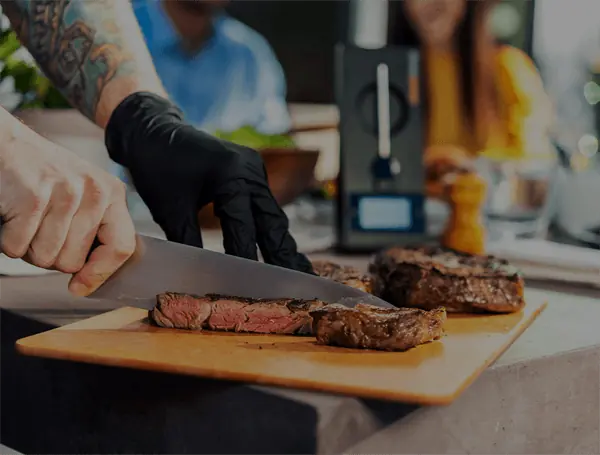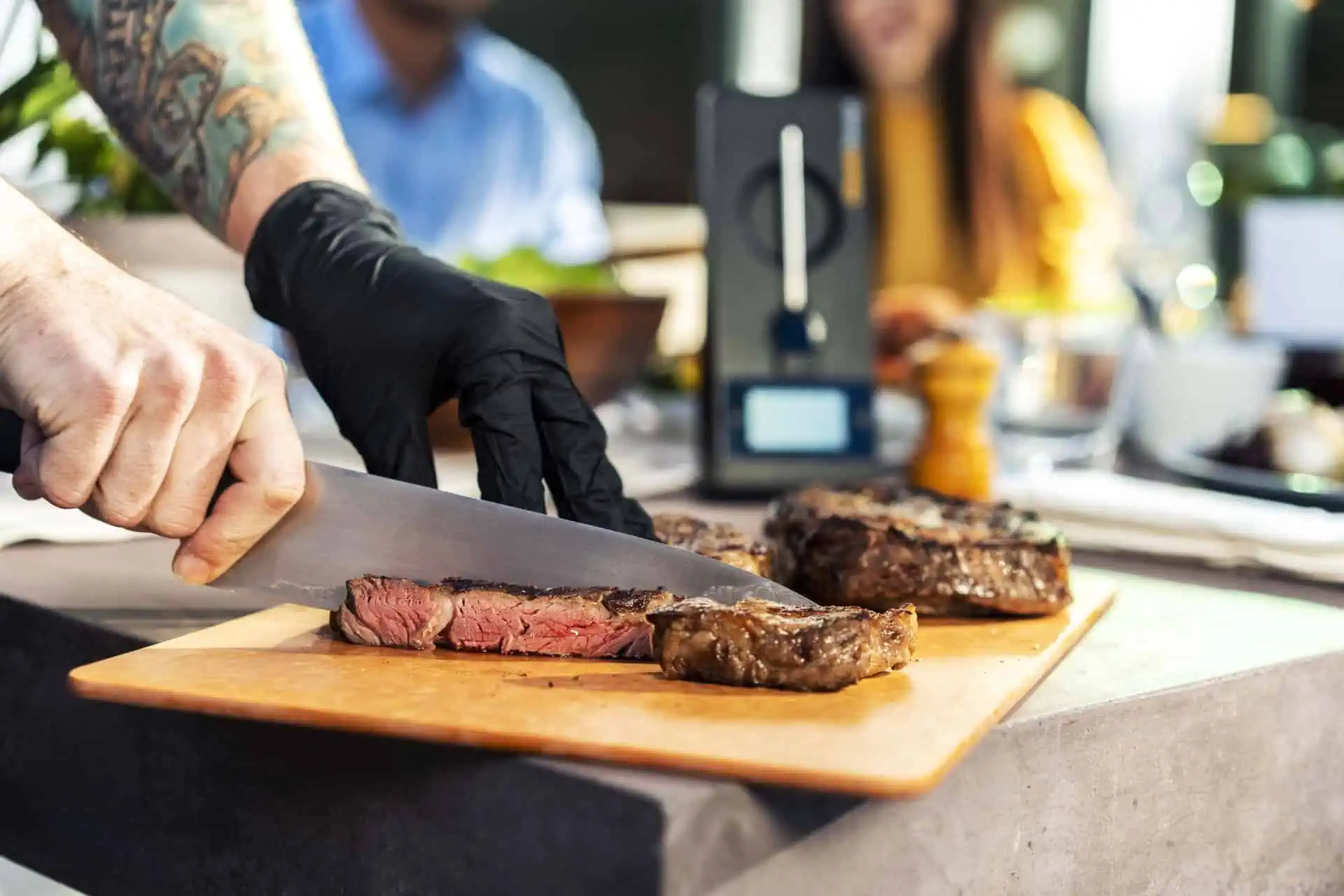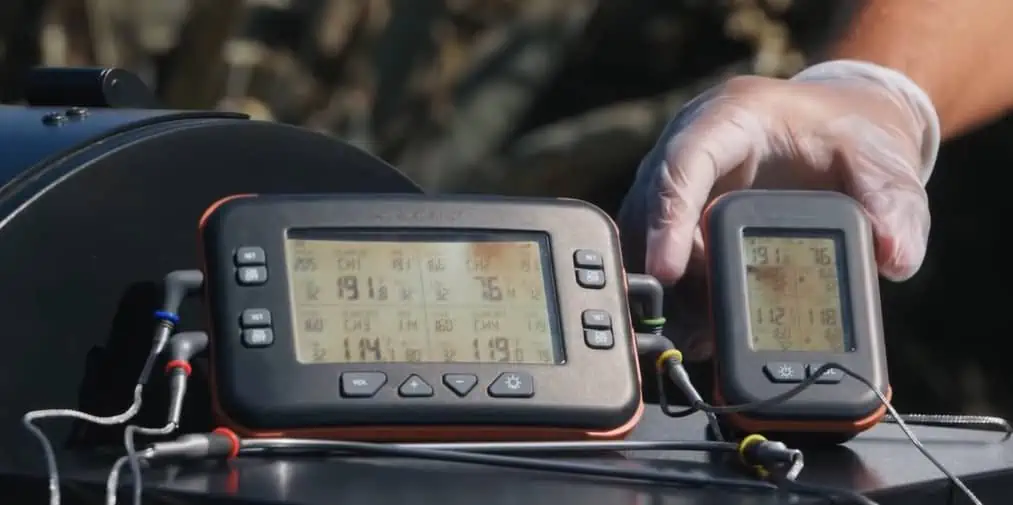
Cooking Thermometer Display Types: Which One is Right for You?
Suppose you have researched kitchen thermometers, or you have at least watched a couple of episodes of Master Chef where contestants tossed birds into the oven. In that case, you’ll know exactly how vital and non-negotiable thermometers are for precision cooking. The temperature is everything, whether for making a delicate soufflé, a decadent cake, searing a juicy steak, or cooking a hearty stew. But choosing one can be overwhelming with so many different types of thermometers on the market. So how do you know which instant read thermometer is suitable for you?
Kitchen thermometers take the guesswork out of cooking. With barely an extra step, you can know that whatever you are cooking is cooked precisely how you want it. No slicing or peeking is needed. It means no sitting in front of the oven door wondering why you insisted on cooking instead of ordering takeout.
Digital instant-read thermometers
Digital instant-read thermometers are precisely as their name says, they give you a quick (nearly instant) temperature reading of whatever you are cooking.
Primarily used on meats, instant read thermometers are highly convenient for checking the doneness of your kitchen project. Insert the needle into the meat (choose the thickest part of the meat, away from the bone) and voila! You will have your temperature reading in as little as a couple of seconds.
Digital instant read thermometers are also called thermocouples, and they work by measuring the temperature through a sensor located at the tip of the stem of the reader. As its name suggests, the temperature is displayed on a small digital screen in a numerical display.
Some instant read thermometers come with backlit displays that make the temperature display more visible and easier to read in low-light conditions.
Another important thing you need to know about this thermometer is that you cannot leave them sticking out of your lamb rack while cooking. Instead, you must open the oven (or the grill lid), pull the protein out to stick the probe and read the temperature. The downside of this is that you risk prolonging the cooking time since you allow heat to escape. But that, of course, is a small price to pay for extreme precision cooking.
This type of thermometer comes in a wide range of styles and prices. There are budget-friendly options, while high-end and advanced ones have nifty features such as app integration, Bluetooth connectivity, etc. Obviously, they need batteries to work, and the display can be challenging to read if the battery level is low. Most models turn off independently, while some come with a button to press to turn it on or off. Most models also let you toggle between Celsius and Fahrenheit.
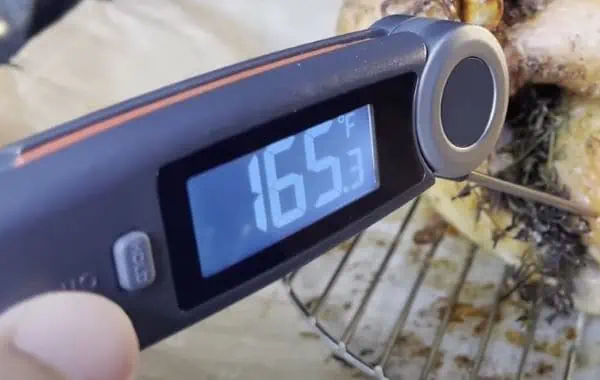
Digital probe thermometers
If you cannot trust your partner in the kitchen and prefer to check whatever they occasionally cook, then a digital thermometer is for you.
A digital probe thermometer gives you peace of mind – it comes with a long probe that you can stick into the meat for the whole cooking process. The probe connects to a digital monitor via a long heat-proof cord; this allows the digital monitor to stay outside the oven for a quick and easy read.
There are also more high-tech cordless versions of this thermometer, where the probe connects to your smartphone via an app. You can check the temperature of the turkey inside the oven while doing other chores, hanging out with your friends on the patio, etc. You can also set it to beep when it reaches a specific temperature to ensure you don’t undercook or overcook your meat. Nearly all digital probe thermometers on the market come with timers as well.
The good thing about this type of digital instant read thermometer is that almost all products work similarly wherever you use them, be it in the oven, smoker, grill, etc. In addition, the cord and probe part can be detached, which makes it convenient to feed the cord through the grate in your grill or smoker so that you can access the screen from the outside when you close the lid.
The downside of this thermometer is that some cords need to be longer. Also, since they are constantly exposed to high heat, they wear down over time. However, more and more products come with more durable and hard wearing materials that allow them to last a long time. Also, compared to other types of digital instant-read thermometers, the probe type is on the pricier side.
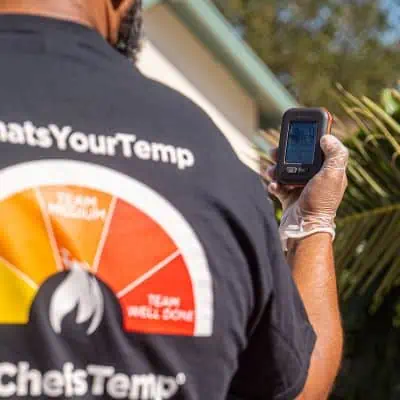
Dial thermometers
Dial thermometers, also called bimetallic strips or analog thermometers, are not digital. Yes, they don’t have a digital monitor to show the temperature; instead, they have a dial made up of a metal probe inside a glass enclosure, often set perpendicular at the top. They also feature a coiled strip of metal in their readers, which expand with heat that pushes the pointer arm (usually red or green) further up the dial as the temperature increases, similar to a clock or a scale.
Depending on the make and model of the thermometer, some can be left inside the oven, while others have lower heat tolerance and must be used like a digital instant-read thermometers.
Dial thermometers are simple, affordable, yet reliable. Unlike the first two types mentioned above, they don’t require batteries or special equipment.
However, the downside of this type of thermometer is that they are less precise than their digital display counterparts. You must closely examine where the arm points to get the exact temperature reading. If you have a small dial with crowded numbers or you have poor eyesight, it could be challenging to get an accurate reading since you could miss it by a single degree.
Analog thermometers are simple, reliable, and affordable. However, they’re less precise than some of the other display types, and they can be difficult to read accurately, especially if the dial is small or the numbers are crowded.
Also, they are not instant-read. Instead, they usually take around a minute to give you a full temperature reading, which runs the risk of the meat overcooking while you wait.
Lastly, the glass on the top of the dial is often fragile. Thus, you have to be extra careful when handling the thermometer.
Infrared kitchen thermometer
Infrared kitchen thermometers are handheld temperature readers that can give you an instant temperature reading in as fast as a couple of seconds or less, all without touching the food. This thermometer uses a laser, making it more convenient and safer for measuring the temperature of liquid food (stew, soups, etc.), as you can measure temperature from a distance.
The downside of this type of kitchen thermometer, however, is that it only measures the surface temperature. As a result, infrared thermometers are less precise than their probe-type counterparts.
If you have a thick slab of meat, the temperature of the surface is different from the temperature at the center of the meat. Thus, they are not ideal for cooking proteins such as thick slices of steak, whole chicken or turkey, etc. Also, when measuring the temperature of sauces, stews, or soups, it is recommended that you stir them thoroughly before using the thermometer to get a more precise internal temperature reading.
Discover more recipes and learn kitchen tricks by joining our cooking family on Facebook.
Shop now for products used in this post:
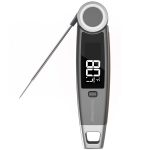
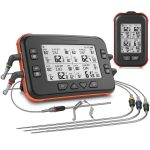
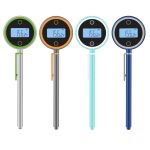
You may also like:
